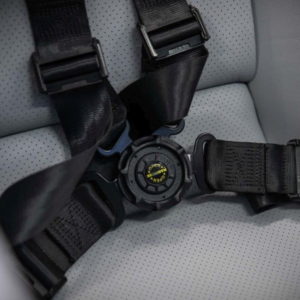No products in the cart.
Aircraft Harnesses
Showing all 2 results
Filters Sort results
Reset Apply
The interdisciplinary know-how of our employees is the basis for the extensive scope of work our EASA approval covers. Since all the production & manufacturing of sub & secondary components are accomplished in-house, the customer benefits from the efficiency of having all parts produced under one roof. Last Updated: 03-11-2023 | ||
Custom after market aircraft harnesses for all Skyranger models. Fully adjustable shoulder and lap straps, left and right adjustment. Please enter your preferred colour on the check-out page. Last Updated: 16-01-2024 | Company / Seller: Location: Derbyshire ⋅ East Midlands ⋅ Derby ⋅ England ⋅ Stoke-on-Trent ⋅ Europe ⋅ UK |
Aircraft Harnesses For Sale on AvPay
AvPay has a range of Aircraft Harnesses For Sale in the US, Europe, Australia, South Africa and throughout the world. Contact Aircraft Harness Sellers directly on AvPay to compare prices through the Aviation Directories here: https://avpay.aero/directory/
AvPay is a global aviation marketplace that lets you browse a wide selection of Aircraft Harnesses For Sale. View all of our Aircraft Harness Listings and discover other related Aviation Products & Services here: https://avpay.aero/marketplace/
Can’t find the Aircraft Harness you’re looking for? Check-out the Aviation Directories to find an Aviation Company that offers the service you’re looking for: https://avpay.aero/directory/
AvPay: Connecting Aircraft Harness Buyers with Aircraft Harner Sellers Worldwide!
Aircraft harnesses are also known as seat belts or restraints and come in various types to ensure the safety and secure positioning of occupants during a flight. While colours may be available in certain cases, the primary focus of aircraft harnesses is on functionality and compliance with safety regulations. Lap belts are the simplest form of aircraft harnesses. They consist of a strap that goes across the occupant’s lap, securing them to the seat. Lap belts are commonly found in small aircraft or as additional restraints in larger aircraft. Three-point harnesses provide a higher level of safety by utilizing three attachment points. They consist of a lap belt and a shoulder harness that goes diagonally across the occupant’s chest and over the shoulder. Three-point harnesses are more secure and widely used in various aircraft, including general aviation planes. Four-point harnesses provide even greater security by adding a second attachment point on the lap portion of the belt. This additional attachment point helps distribute the forces more evenly in the event of an impact. Four-point harnesses are often used in high-performance aircraft or aerobatic planes. Five-point harnesses are similar to four-point harnesses but feature an additional strap that goes between the occupant’s legs, attaching to the lap belt. This configuration offers even more stability and prevents the occupant from sliding under the belt in extreme situations. Five-point harnesses are commonly found in high-performance or racing aircraft. While functionality and safety compliance are the primary considerations, some manufacturers may offer limited colour options for aircraft harnesses. The availability of colours may depend on the specific manufacturer, aircraft type, and regulatory requirements. However, it’s essential to prioritize safety and choose harnesses that meet the necessary aviation standards rather than focusing solely on colour options. When selecting or replacing aircraft harnesses, it’s important to ensure they meet applicable regulatory requirements, such as those outlined by aviation authorities like the Federal Aviation Administration (FAA) in the United States or the European Union Aviation Safety Agency (EASA) in Europe. Additionally, proper installation and regular inspection of harnesses are crucial to maintaining their effectiveness and ensuring occupant safety.







